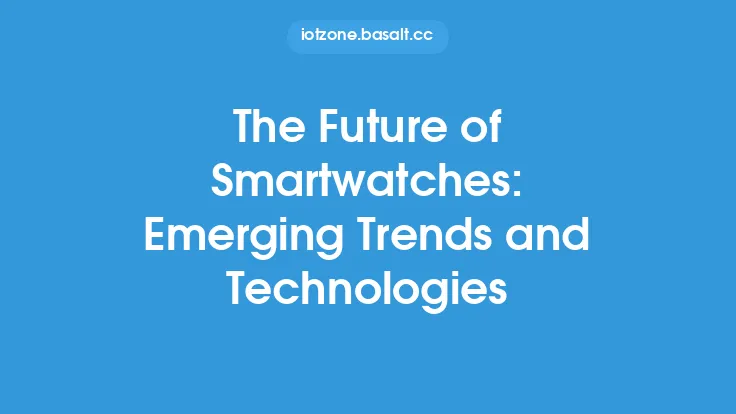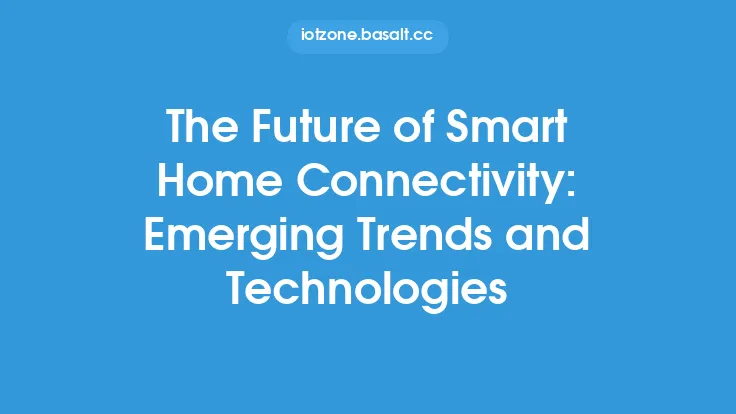The world of fitness tracking is undergoing a significant transformation, driven by advancements in technology, changing consumer preferences, and the growing demand for more sophisticated and personalized health monitoring. As the market continues to evolve, we can expect to see the emergence of new trends and technologies that will shape the future of fitness trackers. In this article, we will delve into the latest developments and innovations that are set to revolutionize the industry.
Emerging Trends in Fitness Tracking
One of the most significant trends in fitness tracking is the shift towards more holistic and comprehensive health monitoring. Gone are the days of simple step tracking and calorie counting; modern fitness trackers are now equipped with advanced sensors and algorithms that can track a wide range of health metrics, including heart rate, blood oxygen levels, and sleep quality. This trend is driven by the growing recognition that fitness is not just about physical activity, but also about overall well-being and health.
Another trend that is gaining traction is the use of artificial intelligence (AI) and machine learning (ML) in fitness tracking. AI-powered fitness trackers can analyze user data and provide personalized recommendations for improvement, while ML algorithms can help to identify patterns and anomalies in user behavior. This can be particularly useful for users who are looking to optimize their workout routines or identify potential health risks.
Advances in Sensor Technology
The accuracy and reliability of fitness trackers are heavily dependent on the quality of their sensors. Recent advances in sensor technology have led to the development of more sophisticated and accurate sensors that can track a wide range of health metrics. For example, photoplethysmography (PPG) sensors can track heart rate and blood oxygen levels, while electrocardiogram (ECG) sensors can monitor heart rhythm and detect potential cardiac abnormalities.
Another area of innovation is in the development of bioimpedance sensors, which can track body composition and hydration levels. These sensors use a small electrical current to measure the resistance of body tissues, providing a detailed picture of a user's body composition and hydration status. This can be particularly useful for athletes and fitness enthusiasts who need to monitor their body composition and hydration levels to optimize their performance.
The Rise of Smart Fabrics and Wearable Technology
Smart fabrics and wearable technology are set to play a major role in the future of fitness tracking. Smart fabrics are textiles that have been embedded with sensors and other technologies that can track a wide range of health metrics, including heart rate, blood pressure, and body temperature. These fabrics can be integrated into clothing and accessories, providing a seamless and unobtrusive way to track health metrics.
Wearable technology is also becoming increasingly sophisticated, with the development of smartwatches, fitness trackers, and other wearable devices that can track a wide range of health metrics. These devices can be connected to smartphones and other devices, providing a detailed picture of a user's health and fitness levels. The rise of wearable technology is driven by the growing demand for more convenient and accessible health monitoring, and is set to continue to shape the future of fitness tracking.
The Importance of Data Analytics and Interpretation
The sheer volume of data generated by fitness trackers can be overwhelming, and it is essential to have effective data analytics and interpretation tools to make sense of this data. This is where data analytics and interpretation come in – the process of analyzing and interpreting data to provide insights and recommendations for improvement.
Data analytics and interpretation are critical components of fitness tracking, as they enable users to understand their health and fitness levels, identify areas for improvement, and track progress over time. This can be particularly useful for users who are looking to optimize their workout routines or identify potential health risks. The development of more sophisticated data analytics and interpretation tools is set to continue to shape the future of fitness tracking, enabling users to gain a deeper understanding of their health and fitness levels.
The Future of Fitness Tracking: Opportunities and Challenges
The future of fitness tracking is filled with opportunities and challenges. On the one hand, advances in technology and the growing demand for more sophisticated health monitoring are driving innovation and growth in the industry. On the other hand, there are concerns about data privacy and security, as well as the potential for fitness trackers to be used as a tool for social control or surveillance.
Despite these challenges, the future of fitness tracking looks bright. As technology continues to evolve and improve, we can expect to see the development of more sophisticated and accurate fitness trackers that can track a wide range of health metrics. The integration of AI and ML into fitness tracking is set to continue, providing users with personalized recommendations and insights into their health and fitness levels.
Conclusion
In conclusion, the future of fitness tracking is an exciting and rapidly evolving field, driven by advances in technology, changing consumer preferences, and the growing demand for more sophisticated health monitoring. As we look to the future, we can expect to see the emergence of new trends and technologies that will shape the industry, from the development of more sophisticated sensors and wearable technology to the integration of AI and ML into fitness tracking. Whether you are a fitness enthusiast, an athlete, or simply someone who is looking to improve your overall health and well-being, the future of fitness tracking has something to offer.





